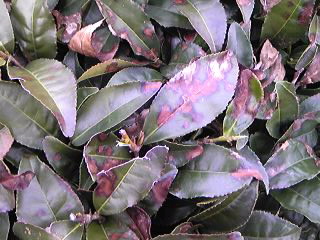Hokumei (ほくめい, 北茗) literally means “north tea”. As you would expect, this tea cultivar is apt for the cold climate of northern regions. It is mainly used for sencha,...
Awa Bancha
Awa bancha (阿波晩茶) is a traditional dark tea from Tokushima prefecture. Awa was an old province in what is now Tokushima prefecture. It is now used as another word...
Kokeicha
Kokeicha (固形茶) can be translated as “fixed form tea”, or “solid tea”. The same term is used for compressed tea, such as pu-erh. For this post, however, we’ll talk...
The Fukumidori Tea Cultivar
Fukumidori (ふくみどり) is a good cultivar for northern regions in Japan, because it offers exceptional resistance to cold weather. It’s a normal budding cultivar, which can be harvested one...
Temomi: Rolling Tea by Hand
The temomi (手揉み, hand rolling) process for making sencha isn’t widely used nowadays because machines do all the work. However, the tradition is still kept alive. It’s the basis...
Ishizuchi Kurocha
Thanks to my friend Noli from Sugimoto America, I had the chance to try this rare type of Japanese dark tea. He gave me this and other tea samples...
Hakuyoucha: White Leaf Tea
Because of my previous tea review, I became interested in Hakuyoucha (白葉茶, white leaf tea). We’re not talking about a white tea here, it’s an uncommon green tea made...
The Minekaori Tea Cultivar
There are a few Japanese tea cultivars whose main purpose is to make kamairicha. Minekaori (みねかおり) is one of them. Literally “mountain peak aroma”, Minekaori can be found in...
Japanese Tea with a French Twist
Stephane Danton is a Frenchman that opened a Japanese tea café in Japan: Ocharaka. A man of stubbornness and prudence, Stephane has mentioned how he has found beauty in...
Green Tea Extract
Green tea has risen in popularity mainly for the health benefits that it offers. There’s currently a large demand for green tea supplements, whose main component is green tea...
Green Tea and Weight Loss
Green tea is strongly associated with weight loss by a good part of the world’s population. This has resulted in a large market for “weight loss green tea”, which...
Main Diseases of the Tea Plant in Japan
In a previous post, we saw the pests of the tea plant. This time, let’s take a look at the four main diseases of the tea plant in Japan....

